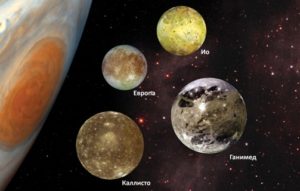Today, the satellites of Jupiter – Io, Europa, Ganymede and Callisto – attract the closest attention of scientists around the world and are even considered as objects for colonization in the distant future. It has been established that some of them have oceans covered with ice, from under which steam sometimes escapes, and some tectonic activity is observed, which indicates a hot core of the celestial body. Heat and water are necessary conditions for the existence of life. The presence of people on the nuclear tug during the research is not planned at this stage.
Many missions are being organized to the moons of Jupiter. However, in order to obtain reliable and complete information, it is necessary to deliver there a large amount of high-tech equipment – spectrometers, gas analyzers, multispectral cameras, and so on. It would be interesting to fly through the “exhaust” of steam, but this requires a separate special satellite, which Zeus can also bring as part of a payload module, Izvestia writes.
The Zeus tug will fly around the Moon, head towards Venus, leave several satellites there and, finally, begin its journey to Jupiter. There, Zeus will check the planet’s satellites for the presence of biomarkers and conditions potentially suitable for the existence of life. The device is planned to be made in such a way that its power can be changed depending on the flight range and the assigned mission.
The Zeus nuclear tug has been developed in Russia since 2010. It is expected to be used for missions to the Moon and other planets.
There may be lakes of melt water on Jupiter’s moon Venus. The salty ocean on the satellite is encased in an ice shell, the thickness of which can range from several kilometers to tens of kilometers. This will make collecting subglacial water samples a challenging task. Scientists believe that the ice shell may be a dynamic system – and itself a place of potential habitation; the ice shell of a celestial body may contain many pockets of water, as in the Greenland ice sheet.
Geophysicists have determined that the mechanism responsible for the formation of double ice ridges in Greenland and on Jupiter’s moon Europa may be the same. In both cases, the ridges are thought to grow by displacing liquid water from near-surface reservoirs that gradually freeze, reports the journal Nature Communications.





